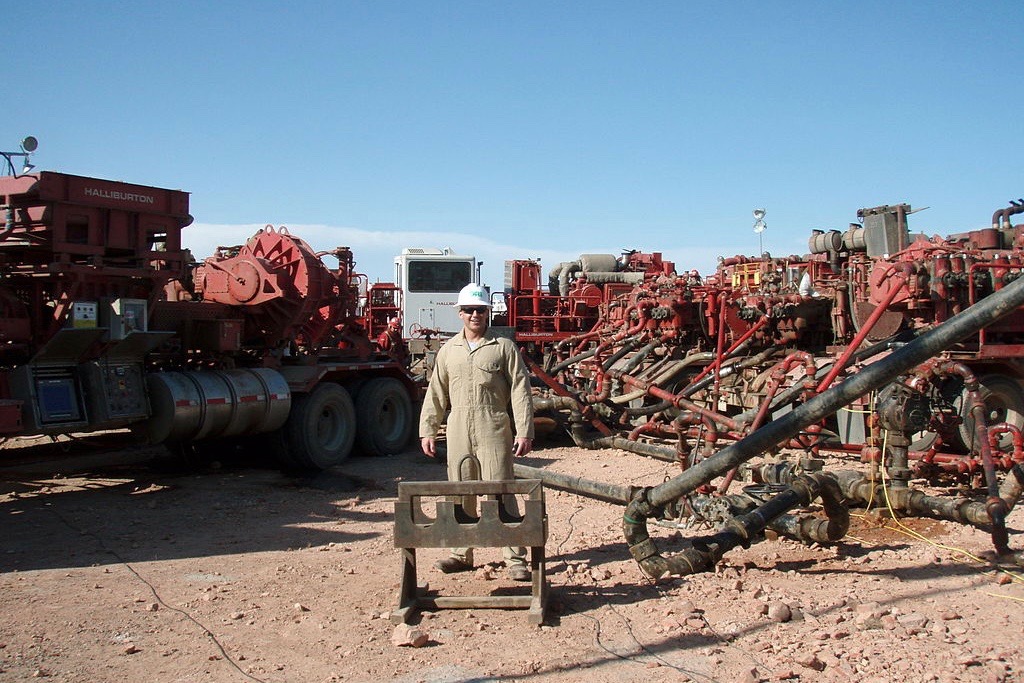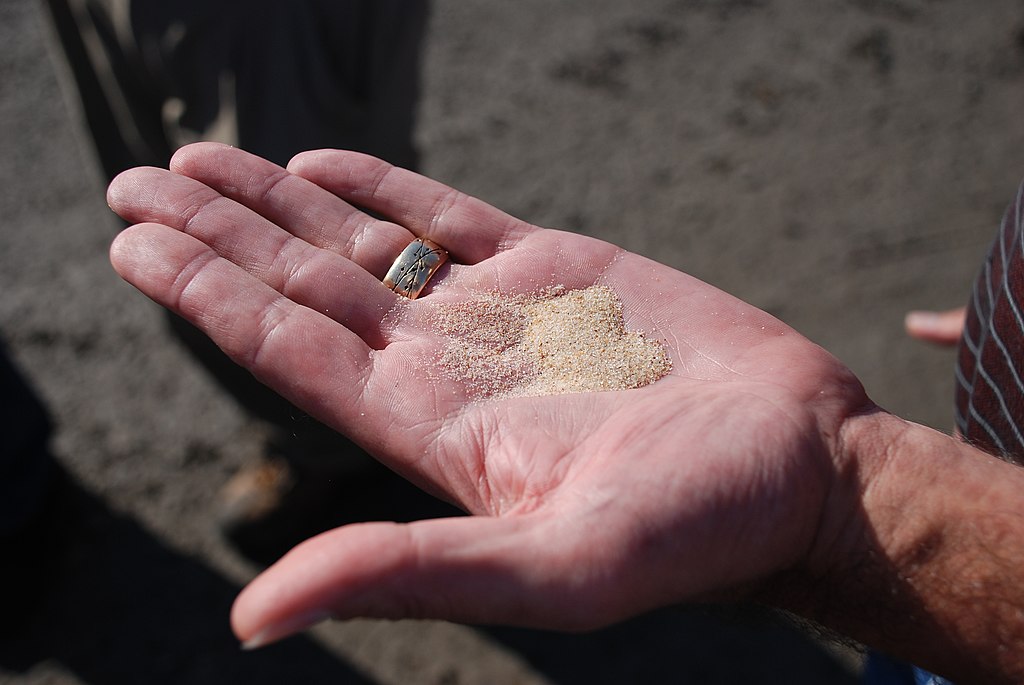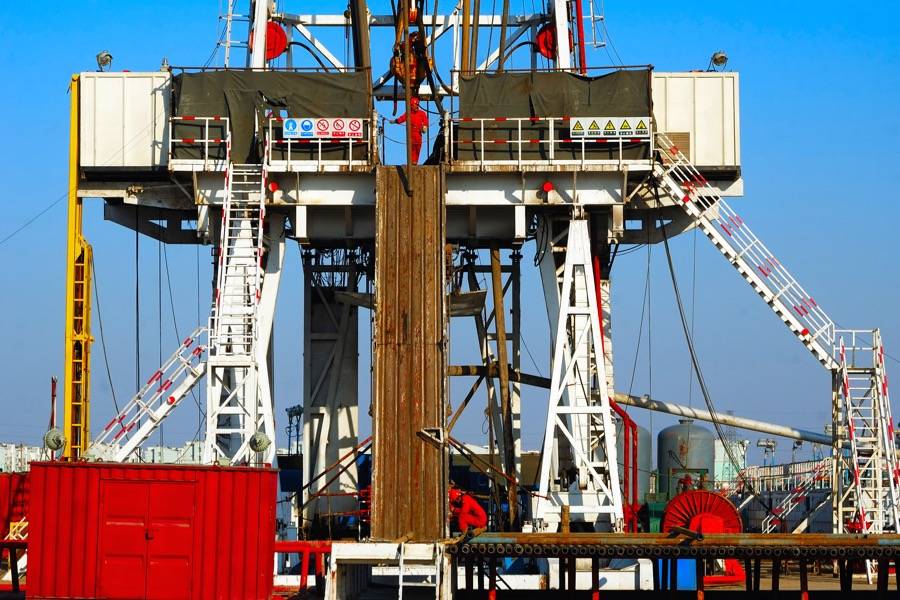What is fracking, and what are its environmental impacts?
Let’s get straight to the most important two questions for the average non-industry oil and gas (and related products) consumer. There’s a lot of science and engineering involved in the actual practice of hydraulic fracturing*. Luckily though, most things related to fracking can be explained in simple terms that are easily understood.
*As a side note: fracking is a recently created and popularised slang term that was quickly adopted. Now the name dwarfs all other variations in everyday usage. The technical term is hydraulic fracturing, and industry insiders spell the abbreviated version ‘fracing’ or use variations such as ‘frac’ing‘. Some people have strong opinions about which is right or wrong, and we’ve published an article about this controversy here.
With better understanding, it’s easier to find compromise and solutions to the problematic topics brought up by any industrial process that involves controversy. Fracking is an Enhanced Oil Recovery (EOR) technique that increases the yield and flow rate of a new well or revitalises an old well that might be producing at an economically marginal rate. It’s used most in ‘tight’ or less permeable formations such as shale.
Let’s define fracking in simple terms:
Fracking is where a mixture of water, sand and chemicals get pumped into a well at high pressure. The pressure causes new fractures and flows inside the formation. These new fractures are ‘held open’ by the sand particles that act as props (and are called proppants). The result is that previously trapped or slow-flowing hydrocarbons get stimulated to join the wellbore and then travel to the surface for commercial use.
What is fracking used for?
It maximises the flow of resources from a particular wellbore. It isn’t just used for oil and gas, but also for enhancing groundwater wells, for wastewater disposal, and electricity generation through geothermal systems. There are other uses too, such as in mining or scientific monitoring.
When used as an enhanced recovery method for oil and gas, sometimes the increase in flow is significant, other times negligible. The level of success is partly down to luck (a calculated guess working out), and somewhat dependent on the structure and make-up of the formation. The technique works best in sandstone, limestone and shale, which is soft or loose enough to be displaced by the frac fluid.
Does fracking harm the environment?
Both the ‘pro’ and ‘anti’ movements are well voiced, and the environmental impacts of fracking have been regularly debated. As is the case with most disagreements of this nature, there are plenty of people with very extreme views.
A fracking advocate will say that there’s no evidence whatsoever that fracking causes any more environmental impact than regular drilling. An extreme environmentalist would object to any drilling at all. Evidence of possible side effects gets used as poster examples of the ‘evils’ of the fossil fuel industry, along with the destruction of indigenous land in undeveloped rainforests and so on. Both sides can produce evidence, but most people with an opinion can’t scientifically explain the reasons for them.
Any drilling or mining for natural resources has an environmental impact; building a residential house also changes the environment in the immediate area. (As well as at the mining sites of the materials used). When people talk about the environmental effects of fracking, they usually mean the potential harm in addition to regular mining.
Namely, we’re talking about four main impacts:
- The contamination of underground water aquifers by frac water or hydrocarbons.
- Increased incidence of earthquakes and sinkholes in the areas that are prone to them.
- Frac water that usually has salt and chemicals in, destroying topsoil fertility of agricultural land.
- The environmental impacts of frac sand mining. We discuss this later in the article, examples include the clearance of vegetation, plus air and noise pollution.
In addition to these four, there are also other impacts, such as additional methane releases. Methane is a potent greenhouse gas.
Most official commissions, enquiries and research have indeed failed to confirm any direct environmental impact. It’s also true that individual homeowners report that their water is causing severe health issues, which started after nearby frac operations. Some tests for pollutants after fracking has been carried out in an area indicate that there is an impact.
Different official findings
Most official scientists in the US have dismissed the incidence of earthquakes directly attributable to fracking. The U.S. Geological Survey has stated:
Fracking is NOT causing most of the induced earthquakes. Wastewater disposal is the primary cause of the recent increase in earthquakes in the central United States.
The second point is worth further consideration since the amount of water used in hydraulic fracturing is enormous (more on this later). Wastewater often gets pumped deep underground in an injection well. Technology is also available for the recycling of wastewater. Wastewater gets produced from all types of wells, not just frac wells, but the conventional ones too.
Halliburton introduced hydraulic fracturing as we know it in 1949 in the USA, so the industry has almost 70 years of experience. In the UK, licenses have been approved in the past ten years. But local governments and campaigners have halted the practice. Cuadrilla Resources did some test drilling on a site near Blackpool that coincided with a couple of small earthquakes. The first sentence of a BBC News article says:
It is “highly probable” that shale gas test drilling triggered earth tremors in Lancashire, a study has found.
This finding is different from the US official line, and you have to wonder if there’s a big enough data set to draw any conclusions. If you’re pro or anti, you could build a compelling case to justify your view. The two opposing arguments, developed from freely available information, might make it seem like the authors were on two different planets.
There’s the extra drain on groundwater supplies as a result of the sourcing of frac water to consider, as well as the wastewater disposal. Industry insiders often concede that increased seismic activity can be attributed, but suggest that the levels of the new tremors are low, not enough for people to notice.
The problem of bias
Those who aren’t ‘pro’ or ‘anti’ might be either disinterested or cynical and hard to convince either way. We know that surveys, studies and commissions can be paid for by oil companies, or governments that receive donations from them.
If you dig around, you can find plenty of information about a rise in blowouts and spills that have risen at a rate faster than the shale boom itself. Studies by environmental groups are also hard to trust, with so much intense emotion on both sides of the debate, and it’s hard to imagine impartiality in the process.
Water supplies can also be contaminated when there has been no fracking activity at all. Early discoveries of oil and gas came from situations where oil seeped from the ground. The rare incidence of flammable water predated the oil and gas industry and continued after it began, in areas not fracked.
The problem that humanity faces are that we’ve found much of the cheaper and accessible oil. Challenging choices present themselves when supplying global demand. Do we keep drilling in progressively deeper water with its inherent risks? Do we move the activity to the Arctic? Or do we use enhanced recovery techniques to get the most out of existing wells?
Consumer lead action
The more straightforward answer would be for global consumers to all stop using single-use plastic, cycle and walk more, turn off heating and wear extra clothing, and so on. With a significant drop in demand, these hard exploration and production choices will be a lot easier. If consumers took the lead, this would help to preserve the environment and buy us time to improve green energy technologies.
Blaming oil companies for what everyone is involved in, and benefiting from can be seen as non-productive and hypocritical. It’s human nature that demand always gets supplied, as the epic failures of the ‘war on drugs’ around the world have illustrated.
With all drilling, exploration and production, techniques have been perfected to keep any human or environmental impacts to a minimum. The upstream oil and gas industry is very good at completing projects with zero incidents, accidents or even downtime.
Differing depths
Geologists will tell you that the groundwater and water aquifers for water supplies are usually much shallower than hydrocarbon reserves. When underground water feeds surrounding areas with mains water, the approximate location of the reserves is known. Also, geological formations tend to have distinct layers at different depths below ground. When drilling for oil, it’s clear where the water is, and the drilling continues deeper. Likewise, if while drilling a well for water, the water was found to be contaminated, a new well site would be located.

The well itself must maintain stability and integrity, not just during completion and production, but for many years after the well has been closed in and abandoned. The wellbore can go through layers of soil, rock, sand or water and each layer stays separate. The fracking happens in the hydrocarbon reservoir layer at the deepest part of the well.
One argument made about adverse environmental effects relates to the fact that the shale boom caused a supply glut. This supply glut was the primary cause of the recent oil price crash. Cheaper oil makes green energy comparatively more expensive, and less competitive. Cheap oil and gas might have set the renewable industry back a few years. If that seems a bit extreme, imagine if oil had gone to $150Bbl in 2014 and stayed there? Can you envision the incentive structure for renewables with oil at peak prices?
What is hydraulic fracking?
Hydraulic fracturing is referred to in the mass media and culture as fracking. Hydraulic fracking would be a mixture of the technical term, and the version that most oil and gas industry insiders would term as slang.
While we’re on the topic, here are some other synonyms:
- Hydrofracking
- Hydrofracturing
- Fraccing
- Frac’ing
- Fracing
Add these to the main two variations discussed on this page, and we have seven keywords that mean the same thing. If anyone knows why this is the case, please let us know in the comments section!
Modern fracking process:
Most hydraulic fracture drilling involves creating a vertical wellbore that drills down until sensors and mud logging show that a seam of shale (or other resource-rich formation) has been reached. These shale seams are often 5000 feet (1524 metres) down.
Then, the drill turns 90-degrees (approximately), and the well is drilled laterally (horizontally). The drill head will continue to send back information related to the geology and hydrocarbon readings. Along the lateral wellbore, there are holes created, so that the frac fluid can be shot out at regular intervals (every 50-80 feet). These holes are produced by a perforating gun that fires bullets through the sides of the casing. A plug is put in place to maintain fluid pressure, and separate sections are perforated one by one. By fracking in sections, the previously perforated parts are isolated and don’t let pressure escape.
If you have three and a half minutes, this animation from Chesapeake Energy explains the process well:
Pressure Pumping:
Fracking is sometimes referred to as pressure pumping because of the way that the process works. Large pumps at the surface build water pressure until it’s at a level that will fracture the formation. Once the pressure is high enough, the rush of water hits the hydrocarbon holding geology below. It’s the water pressure that causes the fractures, and pressure pumping is just as relevant a term as hydraulic fracturing since these terms together best describe the process. When the pressure pumps get turned off, the fractures close slightly but are held open by billions of grains of sand.
What are the advantages of fracking?
The main advantage is that natural resources can be extracted economically from areas that wouldn’t be viable with conventional drilling. The viability might be financial, as in uneconomical based on flow rate, or practical, such as tight shale that won’t release its bounty without artificial stimulation. Also, more resources can be pulled from an existing well, reducing the need for additional surface disruption or downholes.
In the 1990’s we saw significant advances in directional and horizontal drilling. This, combined with fracturing, opened up vast swathes of economically viable well site areas. Massive shale reserves were financially accessible for the first time.
The main benefit of this technique is the number of fresh reserves that become economically viable. Most nations consider the challenge of energy independence and also look for new sources of revenue. The USA is now a net exporter of LNG due to the shale boom. The UK knows that the North Sea supplies are depleting, and one day a significant source of income will be gone, there are plenty of shale deposits to be tapped for gas if there’s a political and public will to do so. We know of countries that have been solely reliant on oil and gas for their economy, so this is a big issue.
Jobs, jobs jobs
It’s not just the value of the oil and gas in itself that helps a local and national economy. In the US, the creation of at least a million jobs is a result of the shale industry, and some put the figure at more than two million. Then, there are the economic ripples of new petrochemical plants, railway cart demand, pipelines, equipment suppliers – down to local businesses that supply, house and feed the workers. Would it be better if this economic resource and the jobs all came from the solar industry? Of course, maybe that will be the case in a decade or two.
One advantage that gets overlooked is that fact that fracking enables the extraction of more gas whenever it’s needed. More supply means lower prices, which should lead to less use of dirtier (coal) or more dangerous (nuclear) energy sources. Natural gas is economical and relatively non-polluting.
What is in fracking fluid?
We’ll come to frac sand mining and the issues caused (such as airborne particulate matter created by blasting), slightly further down the page. Opponents also focus on the frac fluid ingredients, by far the biggest is water (about 90%), then sand (9.5%), then a thickener such as a guar gum. The water allows a high-pressure jet. The sand acts as a proppant, and the thickener means that the sand can be held in suspension and jetted along in the flow to the deepest parts of the well.
We’re aware of some of the added chemicals and compounds such as different acids. ‘Chemicals’ represent only .5% of the overall fracking fluid volume. Chemicals are used based on individual strategies that match the formation. For example:
- Methanol which is a type of alcohol has preservative and biocide/disinfectant attributes.
- Hydrochloric or Acetic Acid can get added to weaken the structure and cause ‘acid etching’ which helps to keep the fractures open.
- Ethylene Glycol stops scaling inside pipes.
- Sodium Chloride (regular salt) can get used to stop gels from breaking down.
- Glutaraldehyde is a biocide and disinfectant to combat mould or bacteria build-up. Citric acid can also work for this.
- Borate salt helps maintain viscosity at high temperatures.
- Polyacrylamide is a lubricant to reduce friction.
- Isopropanol is antifreeze to winterise the fluid.
- Sodium and potassium carbonates assist in bonding other chemicals to increase their effectiveness.
Instead of guar gum as a thickener, there are some alternatives such as different cellulose gels. Sometimes natural gas or other hydrocarbons are added. Radioactive tracers are occasionally used to monitor and track the well’s progress. Radioactive elements with a short half-life get chosen to minimise the risk of residual contamination.
There’s one issue that doesn’t help environmentalists understand the full nature of fracking risks. This is that oil and gas companies use trade secrets laws to leave some ingredients only known to them. Unlike Colonel Sanders eleven herbs and spices, frac fluid secret ingredients tend to feed fear among sceptics.
Some of the most toxic and poisonous material comes from beneath the ground, such as mercury or uranium. Logic would suggest that anything that gets mixed into frac water is likely to be relatively safe, especially when pumped deep underground. (Then recovered in a sealed well casing). Issues would only arise in the event of a surface leak or mixing with the groundwater that can reach a river, or our taps.
What is fracking water?
Fracking water could describe the delivered water ready for input into the well. Frac fluid is mostly water, and the process requires a lot (two to seven million gallons throughout a wells lifetime, with an average of five million). The other time that we see this term is in the discussions of wastewater.
What is frac sand?
Frac sand is fragmented quartz, like most sand, but the sharp edges of the grains have been worn to produce a smooth surface. Rounded grains are more straightforward to pump as they can rotate, and roll against the inner surface of casing and tubing as they travel in the fluid. Also, round grains are less likely to clog.
The texture of the sand gets formed over long periods due to geological processes. Another way of describing well-rounded silica is sand that has weathered over the years, like pebbles on a beach, or pebble-like glass pieces that gradually smoothen.
The grain diameter is equal in each grade or batch. Frac plants deliberately do this during processing to supply different sizes for specific use situations. Commercial sand is produced in a range of sizes from 0.1 millimetres to over 2 millimetres, depending on customer requirements. The most common diameter used is between 0.4 and 0.8 millimetres.
The sand grains need to be used in uniform size so that fluid, oil and gas can travel between the grains. Grains of different sizes would clog themselves. The type of sand chosen is also very durable and crushproof in high-pressure environments.
Is fracking sand dangerous?
The sand itself is just sand, which has been cleaned, graded and sorted into different sizes, for various applications. Sand is the proppant inside a frac fluid cocktail, the sand ‘props’ the new cracks in the formation open, to allow the release of oil and gas.
The process of blasting sandstone formations causes particulate matter to become airborne, and stay that way for up to two weeks. This airborne crystalline silica can be breathed in and deposited in the lungs and increases the chances of lung or cardiovascular disease and cancer. Opponents suggest that the monitoring of this particulate matter is sometimes insufficient. For example, monitoring stations might be 10-20 miles away from the mining site, when some residential housing is a closer distance away.
Where is frac sand found?
As with most geological formations, sandstone suitable for crushing and fracking can be found all over the world. The main industry focus has been on the US onshore frac industry, due to the recent historic boom. The sand used in the US mostly comes from the upper midwest on an astonishing scale. The US alone uses 25+ million metric tons a year!
Historically, much of the needed sand has come from the same area in the central part of the United States where we find ‘St. Peter Sandstone’ and similar formations. This sand is hard-wearing and close to the surface so is easy to excavate. The main area for this type of sand is in the mid-western states (Illinois, Indiana, Iowa, Kansas, Kentucky, Minnesota, Michigan, Missouri, Nebraska and Wisconsin).
Localised sources
Since the recent shale boom, a lot of sand production has moved closer to where it’s needed. There has been a significant expansion in West Texas to supply the Permian basin (more than 20 new mines just this year). There are distinct advantages:
- A drastic reduction in transport costs.
- Texas doesn’t freeze in the winter (which causes wet sand to turn to blocks).
- Local sourcing also solves many last-mile bottlenecks such as finding truck drivers or railcar availability.
Since demand has pushed up sand prices, sources local to the drilling sites help to keep costs down. Sand prices have been at $20-30 per ton in recent years, but shortages sometimes push prices up to $70. That’s a big difference when we consider the amount of sand needed for each well.
The sand quality in Texas isn’t as good as St. Peter Sandstone, but it doesn’t need to be blasted or transported long distances, it tends to be situated in dunes, right at the surface ready for scooping up. It isn’t as strong, can’t prop as well, and not suitable for the most extended laterals, but not every drilling site needs the high spec.
Most sand is a mixture of different types of rock and minerals. If you look closely at the sand, you’ll tend to see a mix of brown, black, grey and yellow. Sand for fracking is just silica which is harder wearing than other types of sand.
Frac sand mining
Mining for Frac sand has a distinct process and number of steps to complete. Here are the stages:
- Remove all of the surface vegetation.
- Remove the topsoil, and any other layers (e.g. rock, gravel or clay) to expose the sandstone.
- Drill holes and use explosive charges to break up the sandstone into manageable blocks.
- Extract (scoop up) the sandstone using front-end loaders and backhoes.
- Put the sandstone blocks and chunks into a crusher. Stones or grains of sand that are too big will be separated.
- The sand gets washed to remove clay, silt or anything that’s not sand. Then the sand is put into a tank so that other suspended sediment gets removed. Sand that is too fine will also be separated and sold on.
- Sand is dried, sorted into grain sizes and then stockpiled ready for transfer by truck, barge or rail.
- The water gets drained for re-use. Then the soil, silt, rock, stone, and all of the parts other than the commercial sand are used to fill the mine as part of the reclamation process.
What is a frac sand plant?
Part of the processing gets done at the mine, and then the sand is taken to the plant. Sometimes the plant is at the same site, or a group of mines can share a nearby plant. Processing plants are costly to build and have their own set of practical and logistical issues to overcome.
Frac sand plants vary in size and capacity. The largest ones can handle the production of multiple mines at once. At the other end of the scale, there are small portable processing units that are used at the mine site, or at the well site itself. The large plants can process, cut and sort sand of all diameters, whereas the mobile units tend to be fixed in a specification.
Frac sand hauling
Is a term used to describe the transportation of the sand, from the plant to the oil field. More specifically, when frac sand hauling is referred to, an image of a truck or tanker driver comes to mind. As the shale boom progressed, finding trucks, and truck drivers got tricky at times. That has been one of the leading ‘last mile bottlenecks’ in the shale industry.
Interestingly, the USA has a truck driver shortage in general, even though truck driving is one of the most common and vital jobs in the economy. It’s estimated that there’s a shortfall of 51,000 truck drivers, even though they can earn $40-80,000 per year.
Frac sand companies
We’ve already published an article about fracking companies, where we discuss the biggest pressure pumping companies. Instead of repeating or going over the topic lightly, you can visit that article here. Here’s a list of companies that supply sand:
-
US Silica, Hi-Crush LP, Smart Sand, Covia, Emerge Energy Services, CARBOCeramics, Black Mountain Sand, Vista Proppants and Logistics, Select Sands, Atlas Sand, High Roller Sand, Sierra Frac Sand, Preferred Sands, Superior Silica Sands, and Alpine Silica.
Frac sand market
An investor presentation by US Silica, (30th of May 2018 NYC), revealed that 2018 frac sand consumption is on target to exceed 100 million tons. For 2017 the figure was 66 million, and 2016 ‘only’ 33 million tons were demanded. There were two main reasons for the increase in demand:
- A large number of drilled but uncompleted (DUC) wells created during the price crash. (The intention was probably to make reserves and balance sheets look better. So that debt financing and servicing could continue while the pumping of oil and gas would be below breakeven).
- Better horizontal drilling technology and practices are allowing much longer wells, which need a lot more sand per downhole. Nowadays, horizontal wells can exceed a mile for fracturing use. They can even drill five or six miles in conventional drilling and extraction.
Due to localised production, and the use of lower-grade sand, it’s likely that oversupply is around the corner. All booming industries overshoot, but in this situation, cheaper sand will help the bottom line for pressure pumping companies.
Are there alternatives to frac sand to use as proppants?
Yes, there are different proppant alternatives already available such as ceramic beads made from sintered bauxite. Also, synthetic or aluminium beads, or even coated sand that’s of a lower quality are available.
At the moment, almost all proppants used are the standard frac sand, probably from an economic perspective. That could change with lower-cost alternatives, or if environmental pressure continues to build in the intensive mining areas.
What are the other challenges that the industry faces?
In this article, we’ve mostly covered the practicalities and environmental concerns. In this final section, we’ll recap on a few crucial points. The frac industry faces some specific issues. With so much sand and water needed in the process, bottlenecks and supply constraints are always possible.
Concerning water supplies, there are several related issues. Firstly, where should the water be sourced? Saltwater will cause the equipment to corrode and break down quickly, as well as posing additional environmental risk. Local populations use fresh groundwater, and levels can be depleted even during a hot summer, without other requirements from the industry. Solutions include recycling, which is expensive and bringing extra supplies by tanker, which is also tricky in the quantities needed.
As well as being able to mine and process enough frac sand, the industry often faces last-mile challenges where there are insufficient trucks, or truck drivers (or rail carts) to deliver the necessary quantity. Situations arise where some companies order sand way in advance, and others find that they can’t get any. In this situation, work stops, or more expensive sand gets brought in from further afar. Considering it can take thousands of tons to stimulate a single well, sand supply is one of the main logistical challenges.
Oil price sensitivity
As an enhanced recovery method, hydraulic fracturing works well on marginal wells. Those that might not be very economically viable using standard drilling and pumping techniques. Also, well depletion rates are much faster than conventional wells. Because of these two factors, the frac industry can be more sensitive to oil price changes. A sudden drop in prices such as the one we just saw in 2014/15 meant that most of this section of the industry was unprofitable. This short-term price sensitivity is in contrast to deepwater drilling, where the capital expenditure is more significant upfront. After a well gets completed, the operating expenses are low, and those wells remain productive for many years.










I can see how underground blasting could be so beneficial for drilling. It makes sense that you would want to ensure that it’s done in a place where it’s safe! That way you don’t have to worry about it impacting anything.
I never knew what frac water was. I am doing some research for one of my college classes. I will have to figure out what good companies help distribute fresh water.
Such a well-researched and informative article! Dual techniques of horizontal drilling and hydraulic fracking has been very effective in producing large amounts of oil and gas, but that has resulted in large amounts of over-spending over the last 10 years. US Shale companies today, are fast running out of “tier 1 acreage” , because they have been exhausted at a quicker than expected pace.
As I am among a growing number of people who suffer from an Airborne and Contact Fragrance Allergy – I have grave concerns about the potential ‘scented element ‘ of fracking .
I am having to move to East Cheshire where I have seen there are proposals for fracking.
Any scented or fragrant smell, whatever it’s source , (citric acid has been mentioned) would have a debilitating affect upon me.
The smell alone from the airborne element of the process would mean I would be unable to open windows and venture out.
I could not avoid airborne scent and that’s without even considering the gas itself .
Being exposed constantly to an allergen I can avoid fills me with horror .
It’s interesting to know that fracking could extract natural resources from areas that wouldn’t be viable with conventional drilling. I saw a special feature about oil drilling two days ago and learned about the different techniques to drill for fuel. I heard there is also frac fueling, and it seems to have a lot of benefits to it.